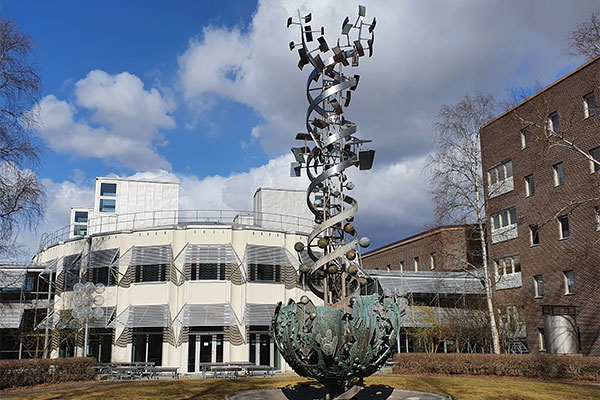BMC is a unique building for preclinical research and education and has been so ever since it was planned and began to be built in the late sixties. A unique collaboration between the professor of physiology Karl Johan Öbrink and the famous architect Paul Hedqvist led to the creation of this fantastic building. Öbrink’s guiding principle was that preclinical research should be brought together in a single building to be able to share advanced infrastructure and have a joint support function in the form of campus management.
A couple of years ago, just before the pandemic, BMC’s fiftieth anniversary was celebrated with a series of lectures, also open to the public. At BMC, many big discoveries have seen the light of day in several different research fields, such as protein separation, polysaccharide research, matrix biology, structural biology and research on growth factors.
BMC may be old, but recent developments probably highlight the epithet “Good”. Akademiska Hus, the owner of the premises, has gratifyingly shown increasing interest in taking responsibility for improving the maintenance of BMC. Something that has been noticeably neglected for several years. Today we are at an interesting stage in BMC’s development as the lease negotiations with Akademiska Hus are concluded, and have led to a long-term agreement with an end date only in 2034. The agreement also means that Akademiska Hus and Uppsala University are making more significant investments in developing BMC.
A first workshop with representatives of the departments and support functions that have their operations at BMC will take place on 6 April. The purpose of the workshop is to highlight ideas, needs and opportunities that can develop BMC’s physical environment for the benefit of successful operations. This first workshop will be followed by more, to identify the measures needed for Uppsala University to continue to be a world-leading centre for research, method development, and education.
Karl Johan Öbrink was, within the framework of BMC, keen to take care of each department’s unique profile at the same time as the organisation promoted the creation of collaborations and networks. A vision that he expressed with the motto “integrated integrity”. With this column, I want to express that there are many reasons to see a bright future for BMC and that we can count on many years of successful education and epoch-making research.
